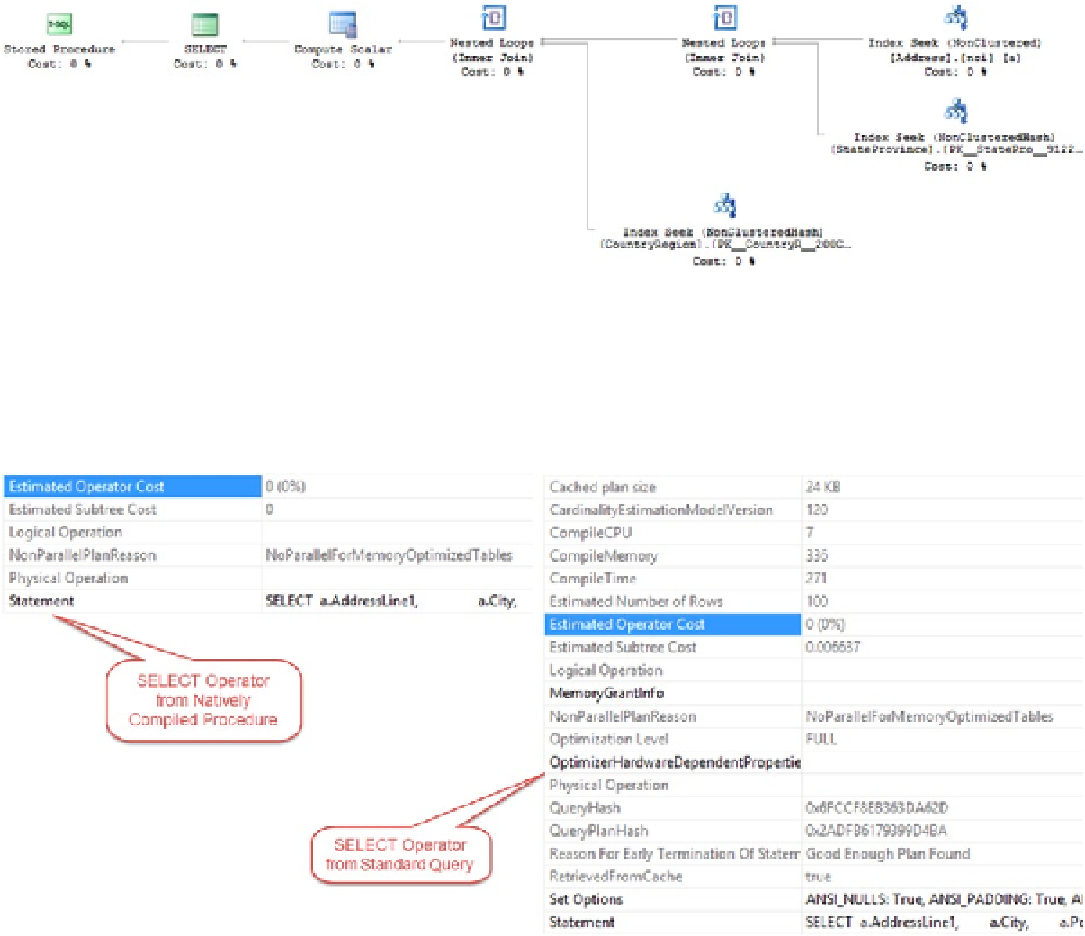Database Reference
In-Depth Information
Figure 23-10.
Estimated execution plan for a natively compiled procedure
You'll note that it looks largely like a regular execution plan, but there are quite a few differences behind the
scenes. If you click the
SELECT
operator, you don't have nearly as many properties. Compare the two sets of data from
the compiled stored procedure shown earlier and the properties of the regular query run earlier in Figure
23-11
.
Figure 23-11.
SELECT operator properties from two different execution plans
Much of the information you would expect to see is gone because the natively compiled procedures just don't
operate in the same way as the other queries. The use of execution plans to determine the behavior of these queries is
absolutely as valuable here as it was with standard queries, but the internals are going to be different.
Recommendations
While the in-memory tables and natively compiled procedures can result in radical improvements in performance
within SQL Server, you're still going to want to evaluate whether their use is warranted in your situation. The limits
imposed on the behavior of these new objects means they are not going to be useful in all circumstances. Further,
because of the requirements on both hardware and on the need for an enterprise-level installation of SQL Server,
many just won't be able to implement these new objects and their behavior. To determine whether your workload is a
good candidate for the use of these new objects, you can do a number of things.

